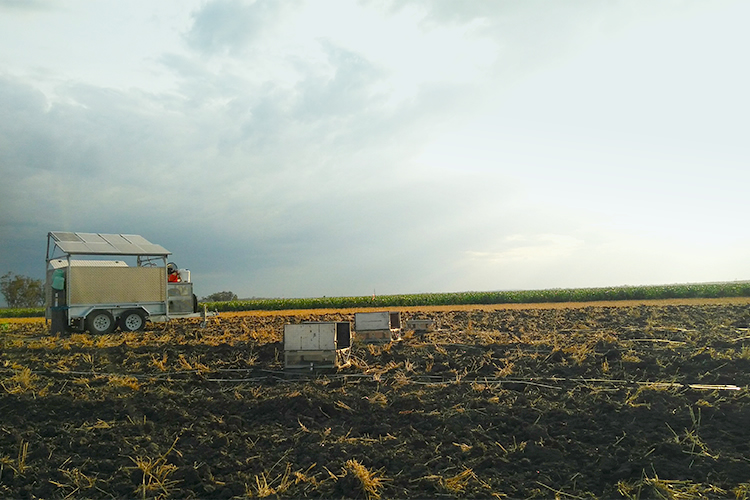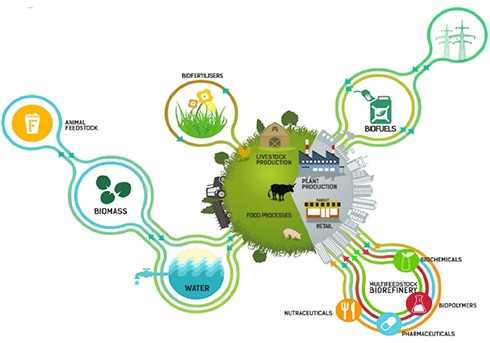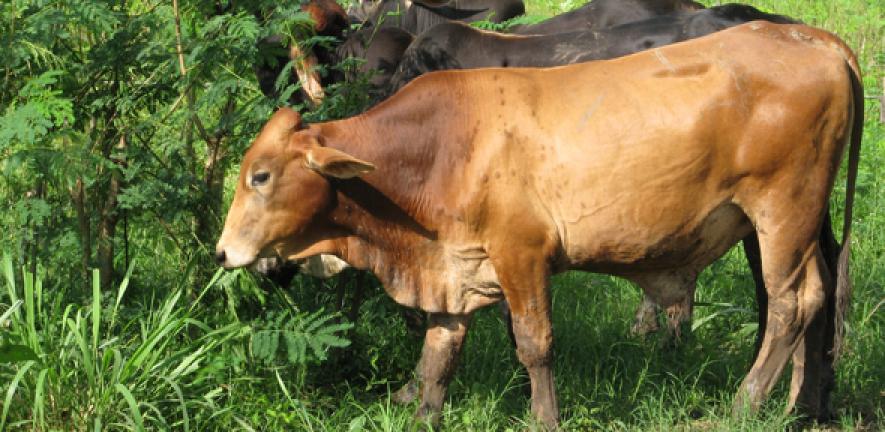Sustainable Agroecosystems And Ecosystem Services

As we move towards a sustainable future, one area that requires our attention is agroecosystems. Agroecosystems are the agricultural systems that sustain our society, providing us with food, fiber, and fuel. With the increasing global population, it is crucial to develop sustainable practices that minimize environmental impacts while ensuring food security. The Institute for Future Environments at the Queensland University of Technology (QUT) is committed to addressing these challenges and establishing sustainable agroecosystems.
Agroecosystems are complex systems that involve interactions between plants, animals, microorganisms, and the environment. The goal of sustainable agroecosystems is to optimize these interactions in a way that enhances productivity, conserves resources, and minimizes negative impacts on the environment.
What is the importance of sustainable agroecosystems? Sustainable agriculture practices are essential for several reasons. Firstly, they help conserve natural resources such as soil, water, and biodiversity. By using techniques like crop rotation, intercropping, and integrated pest management, farmers can maintain soil fertility, reduce water consumption, and minimize the need for chemical inputs.
Secondly, sustainable agroecosystems play a crucial role in mitigating climate change. By adopting practices that sequester carbon in the soil, such as agroforestry and cover cropping, we can reduce greenhouse gas emissions and enhance carbon sinks. This not only helps combat climate change but also improves soil health and resilience.
Ideas for sustainable agroecosystems are constantly evolving, guided by research and innovation. Here are a few ideas that are currently being explored:
1. Agroforestry:
Agroforestry involves the integration of trees with agricultural crops or livestock. By planting trees in and around agricultural fields, farmers can derive multiple benefits. Trees provide shade and windbreaks, decreasing water evaporation from the soil and reducing erosion. They also improve soil fertility by fixing nitrogen and providing organic matter. Further, agroforestry systems can provide alternative income sources through the sale of timber, fruit, or medicinal plant products.
2. Precision Agriculture:
Precision agriculture involves the use of technology to optimize agricultural practices. By employing tools like satellite imagery, GPS, and sensors, farmers can monitor and manage their fields more efficiently. This allows for targeted application of inputs, such as fertilizers and irrigation, leading to reduced waste and enhanced crop yields. Precision agriculture can also help identify and manage pests, diseases, and nutrient deficiencies in real-time.
3. Urban Agriculture:
With the rapid urbanization of cities, urban agriculture is gaining attention as a way to enhance food security and promote sustainability. Urban agriculture involves the cultivation of crops and rearing of animals within urban areas, be it on rooftops, vacant lots, or community gardens. By bringing food production closer to consumers, urban agriculture reduces the carbon footprint associated with transporting food. It also promotes the use of organic waste as compost and creates green spaces that improve the urban environment.
4. Aquaponics:
Aquaponics is a sustainable farming method that combines aquaculture (fish farming) with hydroponics (growing plants in water). In an aquaponics system, fish and plants coexist in a symbiotic relationship. Fish waste provides the nutrients for plant growth, while plants filter and clean the water for the fish. This integrated approach reduces water usage, eliminates the need for chemical fertilizers, and produces both protein (from fish) and vegetables without soil. Aquaponics can be implemented at various scales, from small-scale systems in households to large commercial operations.
5. Conservation Agriculture:
Conservation agriculture involves the adoption of practices that minimize soil disturbance, maintain soil cover, and promote crop rotation. By reducing tillage, farmers can protect soil structure and enhance water infiltration, reducing erosion and nutrient runoff. Maintaining soil cover through crop residues or cover crops helps retain moisture, suppress weeds, and enhance organic matter content. Crop rotation breaks pest and disease cycles, reduces the need for chemical inputs, and improves soil health. Conservation agriculture has been shown to increase yields, conserve water, and improve overall soil quality.
With these ideas in mind, here are some recommendations for implementing sustainable agroecosystems:
1. Education and Awareness:
Increased education and awareness about sustainable agriculture practices are essential. Farmers, researchers, policymakers, and consumers need to be aware of the benefits of sustainable agroecosystems and the techniques available. This can be achieved through training programs, workshops, and public awareness campaigns.
2. Financial Incentives and Support:
Governments and organizations should provide financial incentives and support for farmers transitioning to sustainable agroecosystems. This can include subsidies for implementing sustainable practices, access to credit and loans, and assistance in marketing sustainably produced goods.
3. Collaboration and Knowledge Sharing:
Collaboration between researchers, farmers, and policymakers is crucial in driving sustainable agroecosystem innovations. By sharing knowledge and experiences, we can develop effective strategies and avoid duplicating efforts. This can be facilitated through research networks, farmer-led organizations, and policy forums.
4. Policy and Regulation:
Governments can play a significant role in promoting sustainable agroecosystems by implementing supportive policies and regulations. This includes providing incentives for sustainable practices, setting standards for organic and sustainable certifications, and regulating the use of chemical inputs. Policies should also focus on land-use planning, protecting natural habitats, and promoting biodiversity conservation.
Now, let's explore a listicle of ways in which sustainable agroecosystems can benefit our society:
1. Improved Food Security:
Sustainable agroecosystems can ensure stable and sufficient food production, reducing the risk of hunger and malnutrition. By adopting sustainable practices, farmers can enhance crop yields, reduce post-harvest losses, and diversify food production. This is particularly important in the face of climate change, where extreme weather events and changing rainfall patterns pose risks to traditional agriculture.
2. Environmental Conservation:
Sustainable agroecosystems help conserve natural resources and protect the environment. By implementing practices that reduce water usage, minimize chemical inputs, and enhance soil health, we can mitigate the negative impacts of agriculture on ecosystems. These practices also contribute to the preservation of biodiversity, as sustainable agroecosystems provide habitats and food sources for beneficial insects, birds, and other wildlife.
3. Climate Change Mitigation:
Adopting sustainable agroecosystems is a crucial strategy for mitigating climate change. By sequestering carbon in the soil, reducing greenhouse gas emissions, and promoting renewable energy use, we can contribute to global efforts in reducing atmospheric carbon dioxide levels. Sustainable practices also help farmers adapt to the changing climate by improving the resilience of agroecosystems.
4. Economic Opportunities:
Sustainable agroecosystems offer economic opportunities for farmers and rural communities. By diversifying their production and adopting innovative practices, farmers can access new markets and increase their income. Moreover, sustainable agriculture practices often require skilled labor, providing employment opportunities in rural areas.
Let's address some common questions about sustainable agroecosystems:
1. Are sustainable agroecosystems only suitable for small-scale farming?
No, sustainable agroecosystems can be implemented at various scales, from small-scale farming to large commercial operations. The key is to adapt sustainable practices based on the specific context, considering factors such as land availability, market demand, and available resources.
2. Do sustainable agroecosystems require a lot of investment?
Transitioning to sustainable agroecosystems may require initial investment, such as purchasing equipment or implementing new practices. However, the long-term benefits, such as higher yields, reduced input costs, and improved soil health, often outweigh the initial investment. Additionally, financial support and incentives are available to facilitate the adoption of sustainable practices.
3. How can consumers contribute to sustainable agroecosystems?
Consumers play a crucial role in driving demand for sustainable agriculture products. By choosing sustainably produced food, supporting local farmers, and reducing food waste, consumers can contribute to the growth of sustainable agroecosystems. Providing feedback and engaging with policymakers and retailers can also influence the availability and accessibility of sustainably produced food.
To summarize, sustainable agroecosystems are vital for our future. They offer numerous benefits, including environmental conservation, food security, and economic opportunities. By exploring innovative ideas, implementing recommended practices, and fostering collaboration, we can move closer to a sustainable agricultural system. Together, let's embrace sustainable agroecosystems and pave the way for a healthier and more prosperous future.



Post a Comment for "Sustainable Agroecosystems And Ecosystem Services"